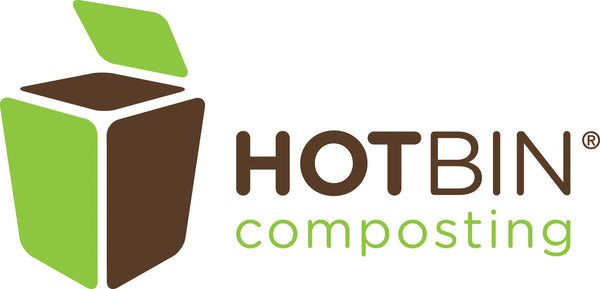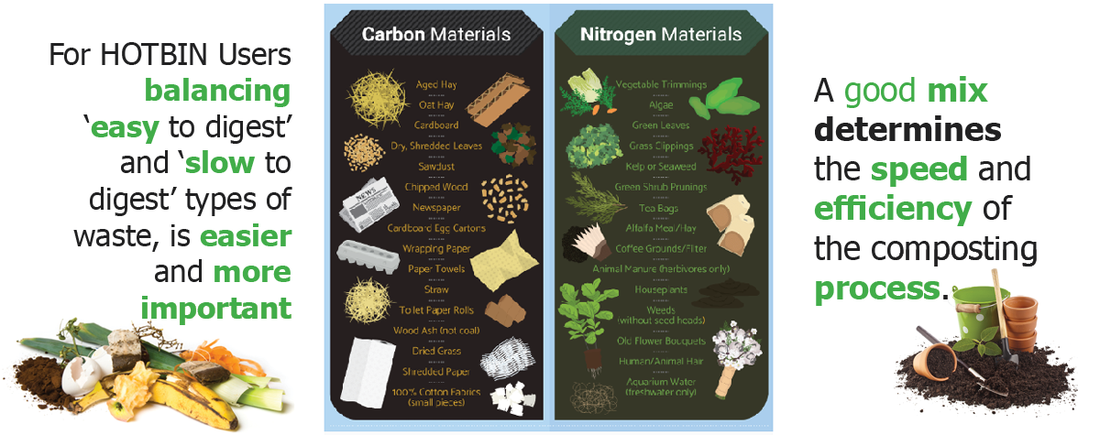Cold Composters vs. HOTBIN
In traditional cold composting (different than HOTBIN) the ideal C:N (Carbon to Nitrogen) ratio is considered to be around 30 parts carbon:1 part nitrogen by weight. There are a couple of reasons this ratio is usually suggested:
- If nitrogen rich materials are added in larger quantities, much of the excess nitrogen will be lost from the decomposition process as ammonia gas, resulting in the production of undesirable odors.
- If insufficient nitrogen rich materials are added, optimal growth and development of the vital microbial populations will be inhibited, which in turn will result in the compost remaining quite cool and a noticeable reduction in the rate of decomposition.
With HOTBIN composting, the C/N ratio is different, and a strict 30:1 ratio is not required. For HOTBIN users it is easier and more important to balance ‘easy to digest’ and ‘slow to digest’ types of waste (i.e. greens (N rich) and browns (C rich), as these affect the temperature and aeration within the HOTBINs, which in turn determines the speed and efficiency of the composting process.
This is, in part due:
- The HOTBIN units being enclosed composters & having an integrated bio-filter which neutralizes any composting odors that are produced during the decomposition process.
- The dominant addition of nitrogen rich materials creates an established microbial population which in turn helps to generate higher temperatures, thereby greatly accelerating the rate of decomposition.
Nitrogen rich materials typically have a high moisture content and are classified as ‘easy to digest’ waste, e.g. waste types such as fresh grass cuttings, raw vegetable peelings and chicken manure. These materials are digested by the bacteria and produce heat very quickly.
Carbon rich materials typically have a lower moisture content and are much harder for the bacteria to digest (e.g. waste types such as autumn leaves, wood chips, hard prunings, hedge cuttings etc). They break down at a much slower rate and release a smaller amount of heat over a longer period than nitrogen rich materials. As such, carbon rich materials are relied upon to help aerate the contents of a HOTBIN by creating air pockets within the unit, keeping the bacteria working aerobically.
Nonetheless, it is important for users to add a mixture of both carbon rich and nitrogen rich materials, to help reach and sustain hot composting temperatures.
Don't have a HOTBIN yet? Buy yours on this website.

